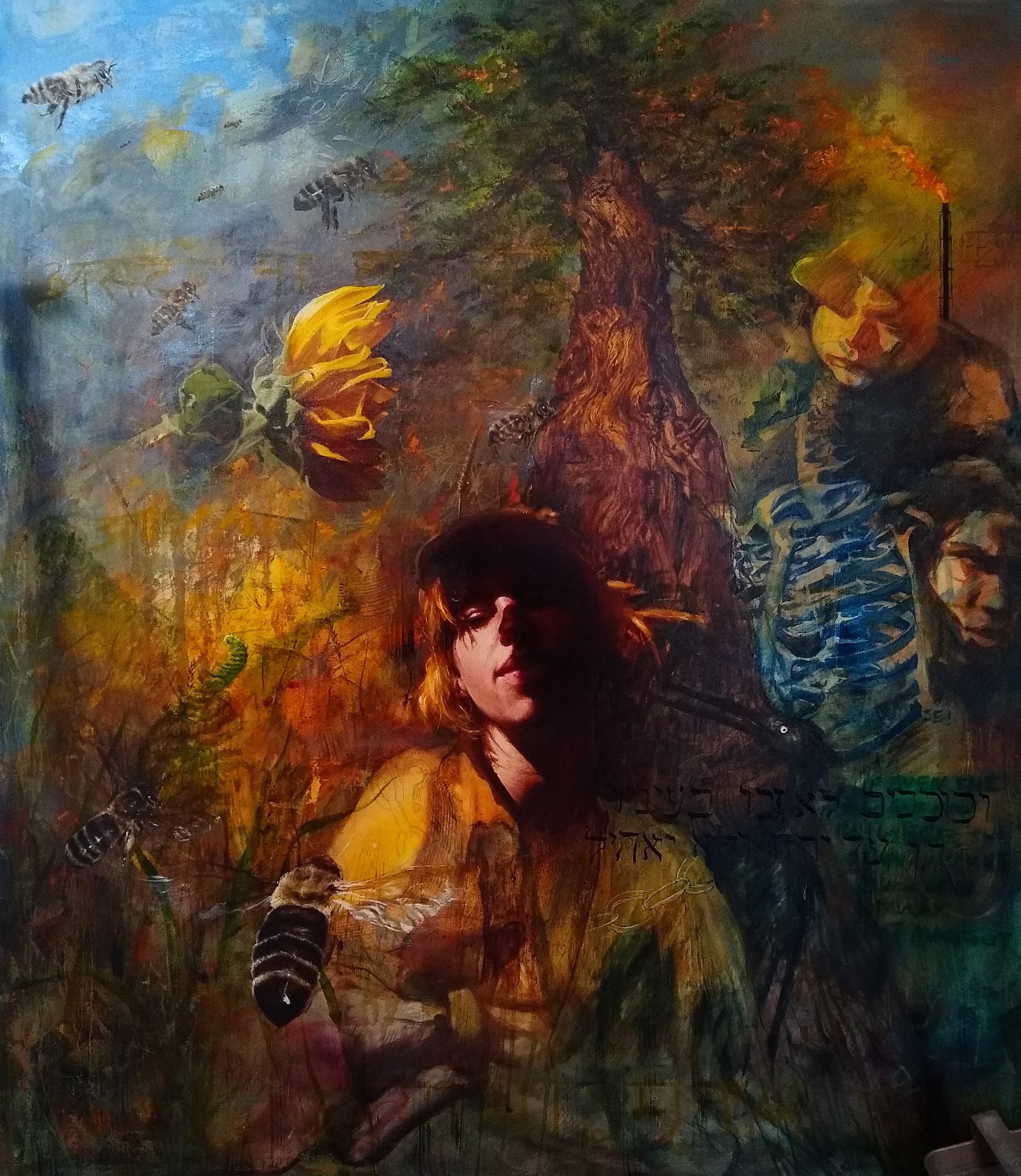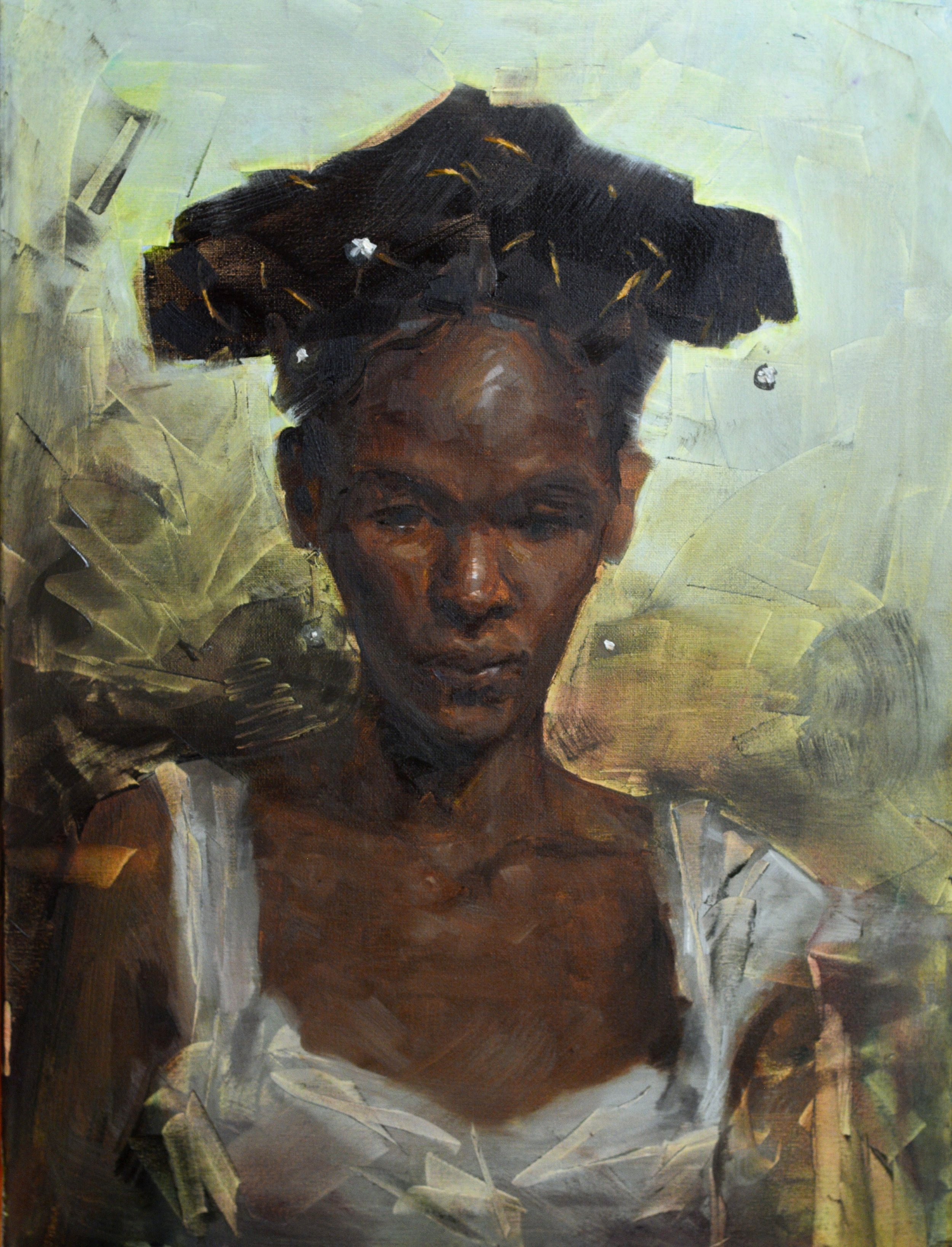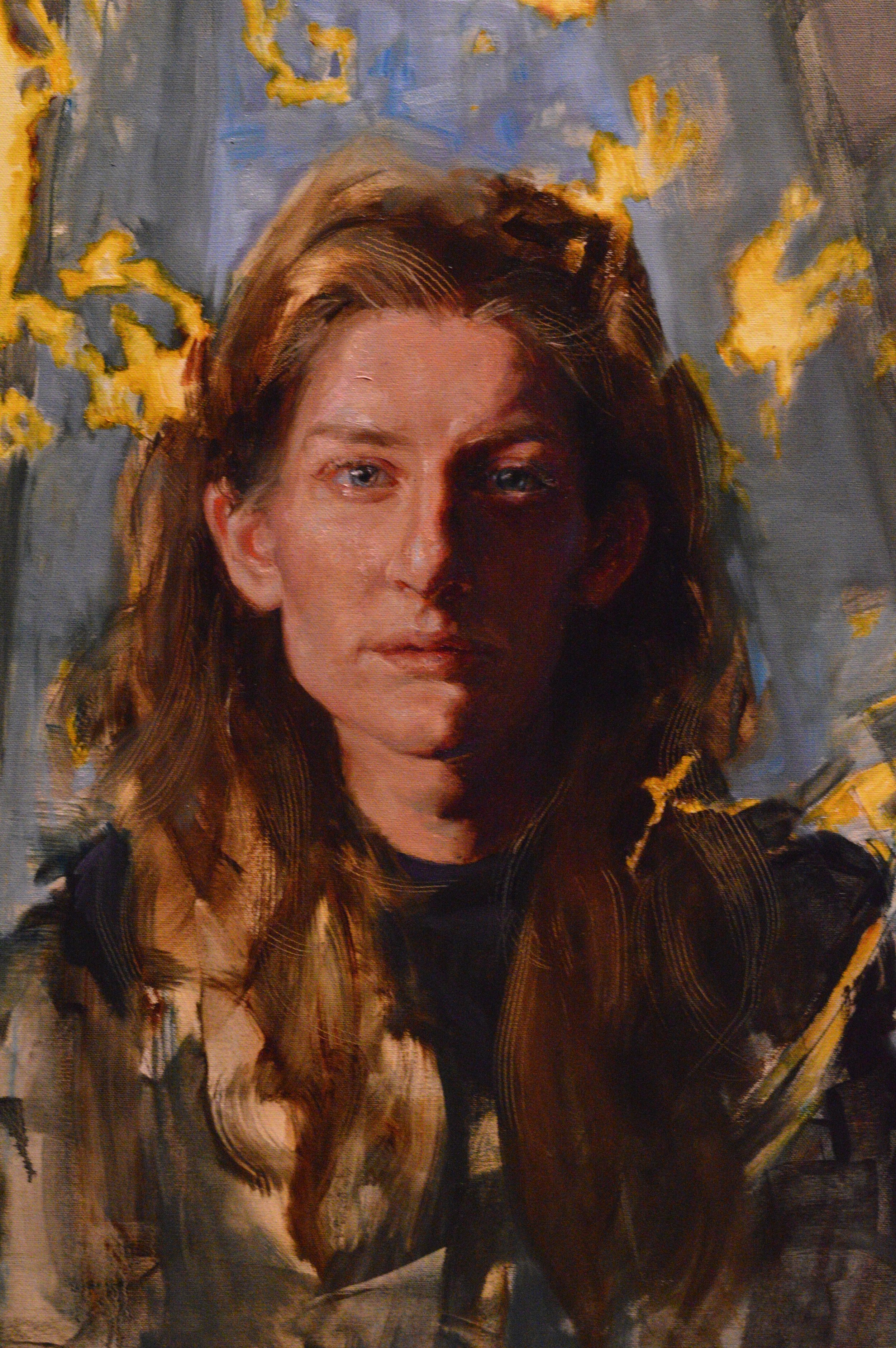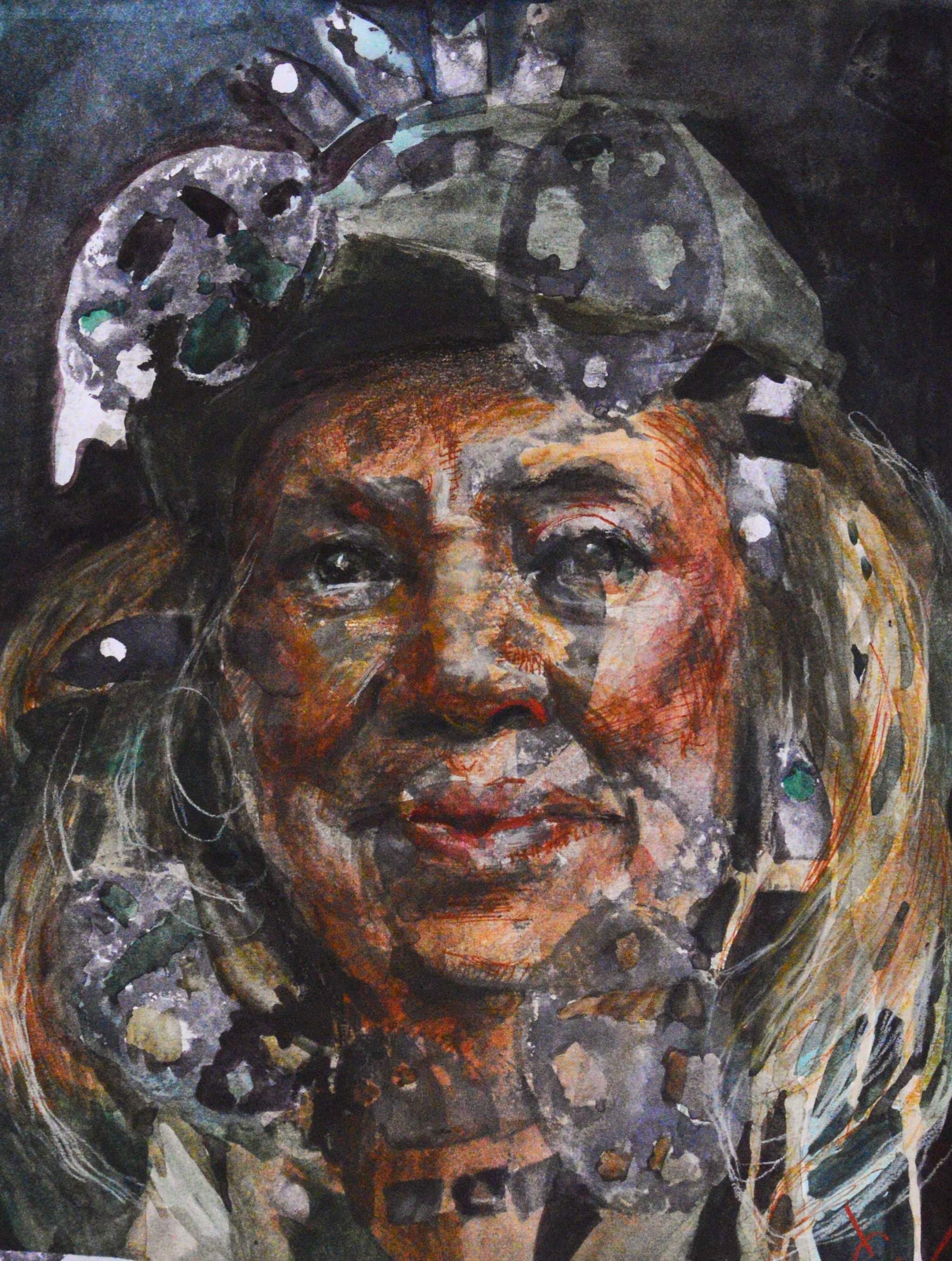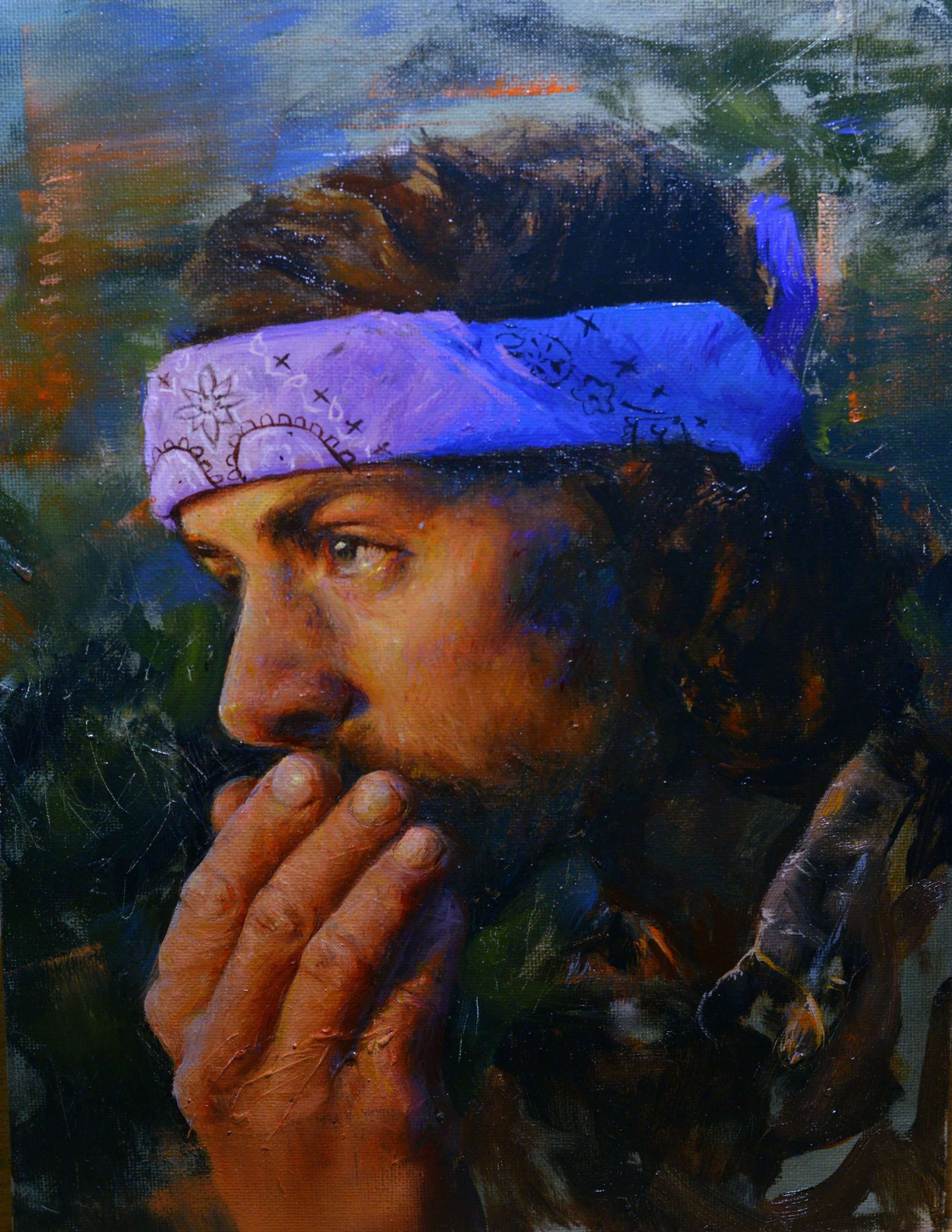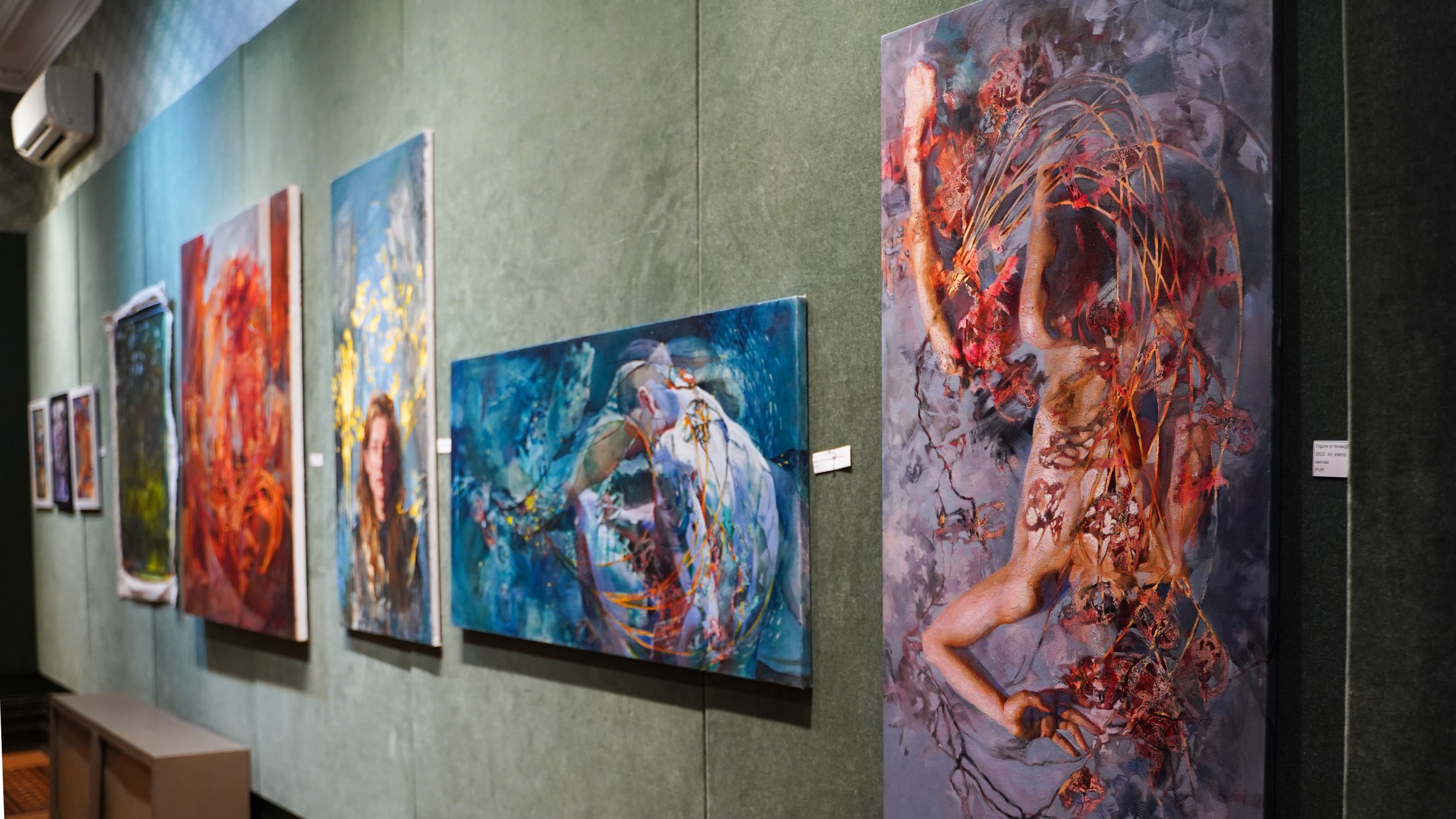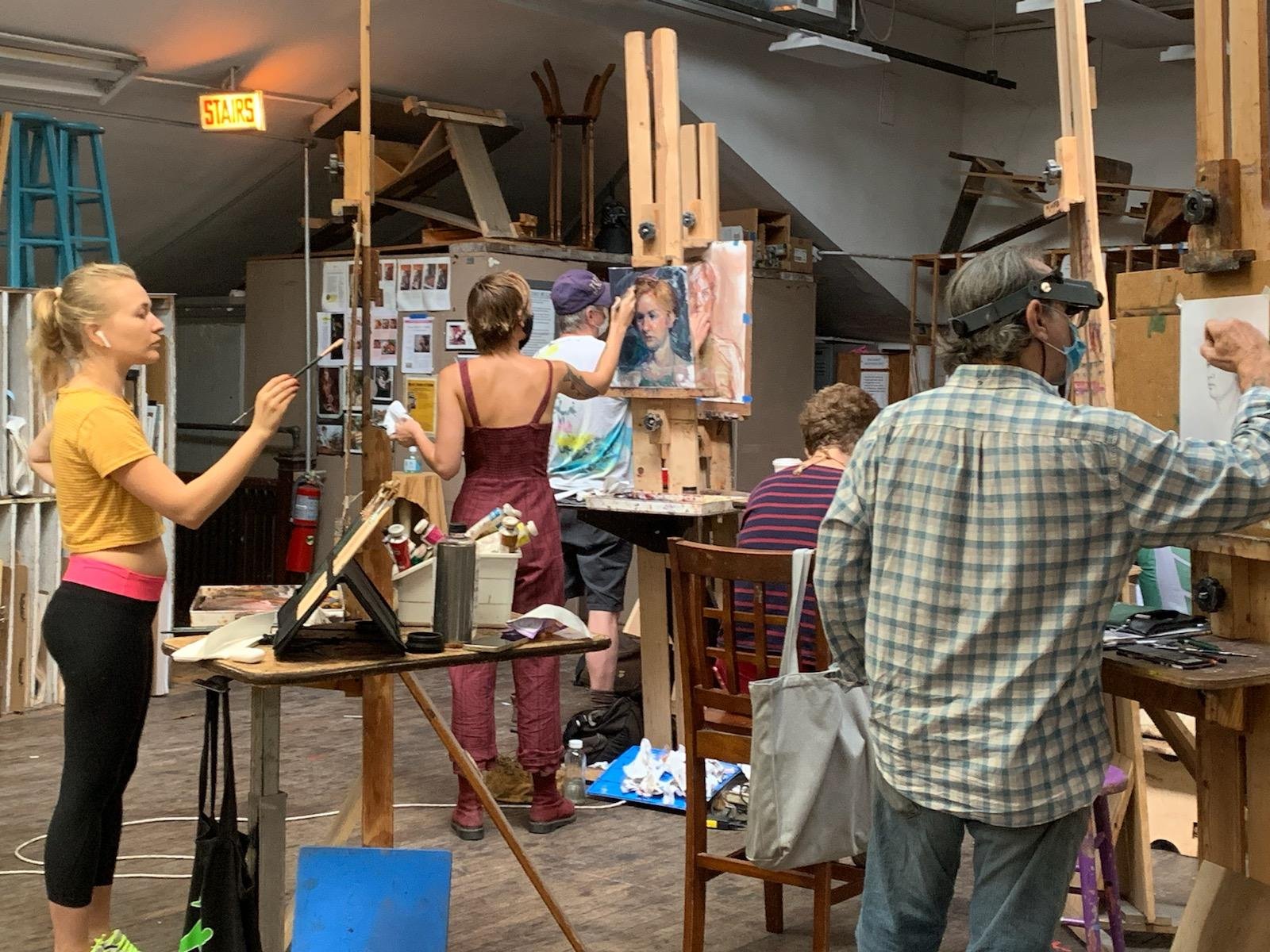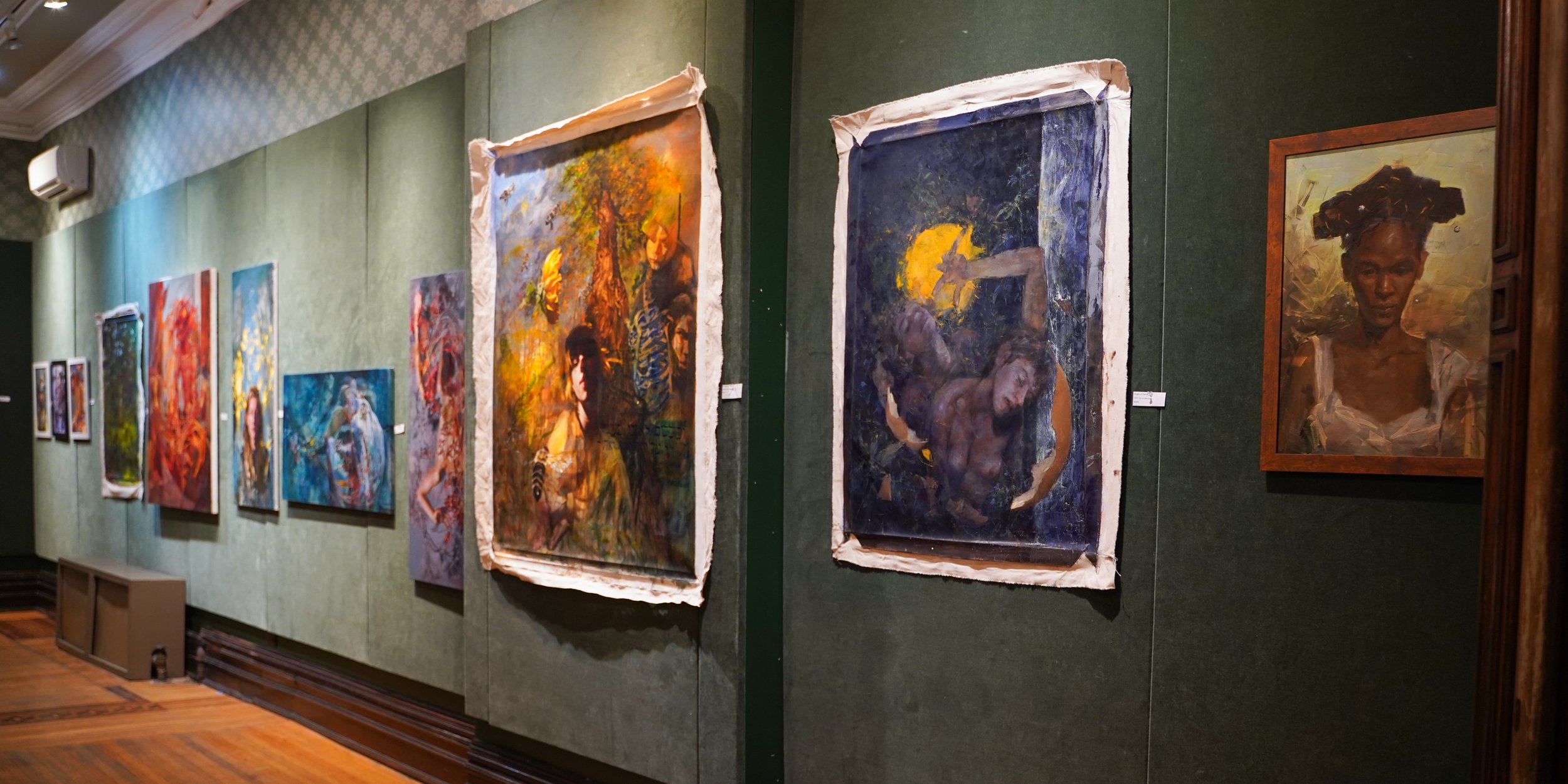Interview
Cass Waters
Cass’s current work revolves around her interest in human ecology and environmental philosophy. She is deeply inspired by her exploration of nature and natural sciences. As Cass learns about nature, she learns about herself.
As a self-taught artist, Cass’ works are not tethered by tradition. She utilizes this freedom to explore new styles rapidly and pull inspiration from a wide variety of sources.
What is your background and how did you start your journey in the art world?
“I can trace my art background to having a lot of unstructured time as a kid. Being homeschooled, I was given freedom to spend time drawing and studying on my own, to which I attribute much of my creative energy. At 16, I cut my schooling short to travel with a food truck and kept sketchbooks with me to record my explorations. I began more formal study when I moved to Montana in 2019, and took classes at an atelier program for a few months. At the time, I was living in an RV and moved frequently for seasonal work. This lifestyle allowed me to study with many different artists for a few months at a time. I then moved to Chicago in 2021 to paint live models at The Palette & Chisel Academy of Fine Art, where I currently instruct drawing and painting workshops.”
What inspires you most?
“I use my art-making to explore myself. I am interested in capturing what seems intangible and mysterious, the things I feel deeply but can’t communicate through language. I stay on the lookout for strangeness and contradiction in my life and in my work. It’s like a constant itch — I kind of hate that I can’t understand anything, but I’m consumed by those ecstatic moments of relief when I catch a glimmer of clarity. I pull much of my inspiration from writings on natural science and philosophy. Right now I’m on a microbe kick.”
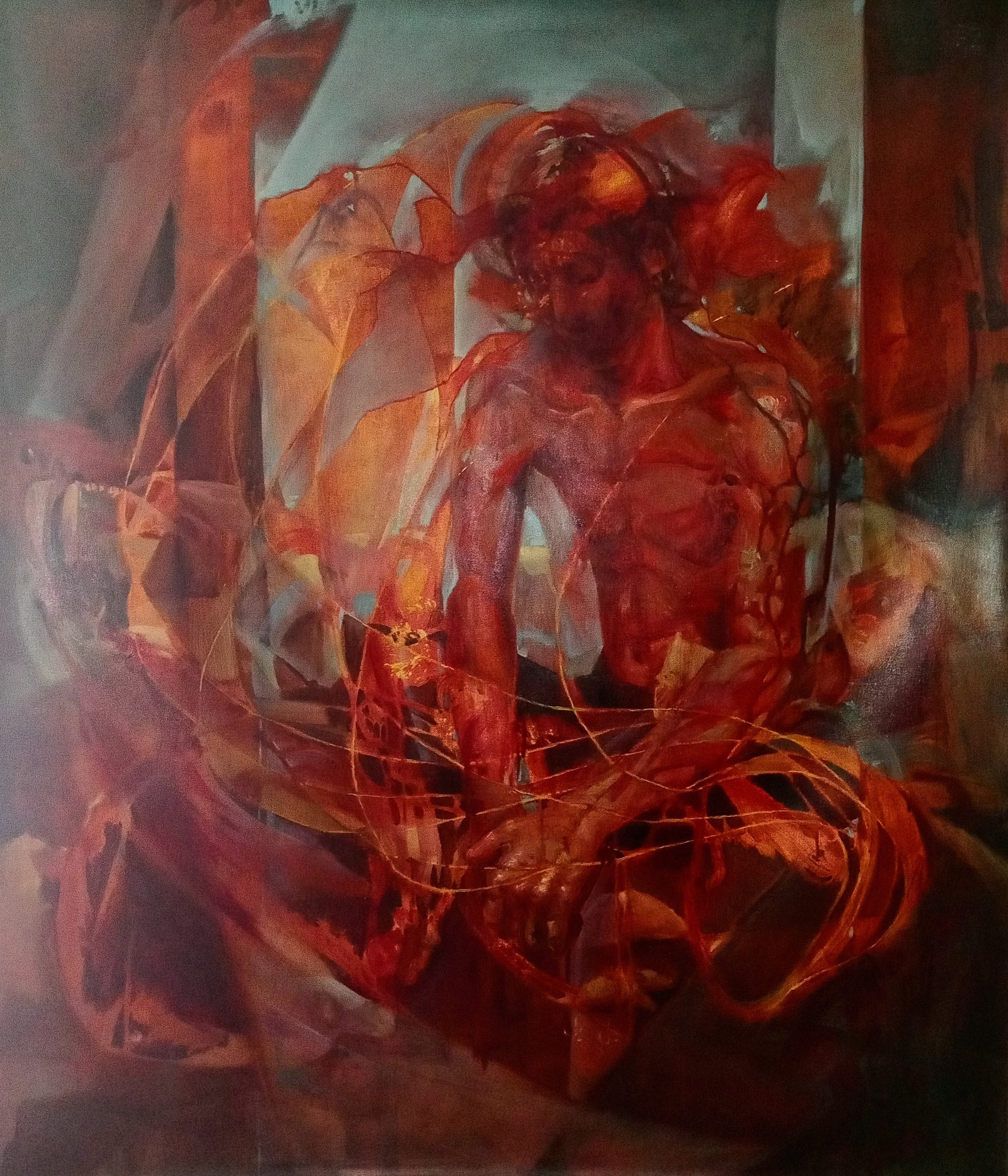
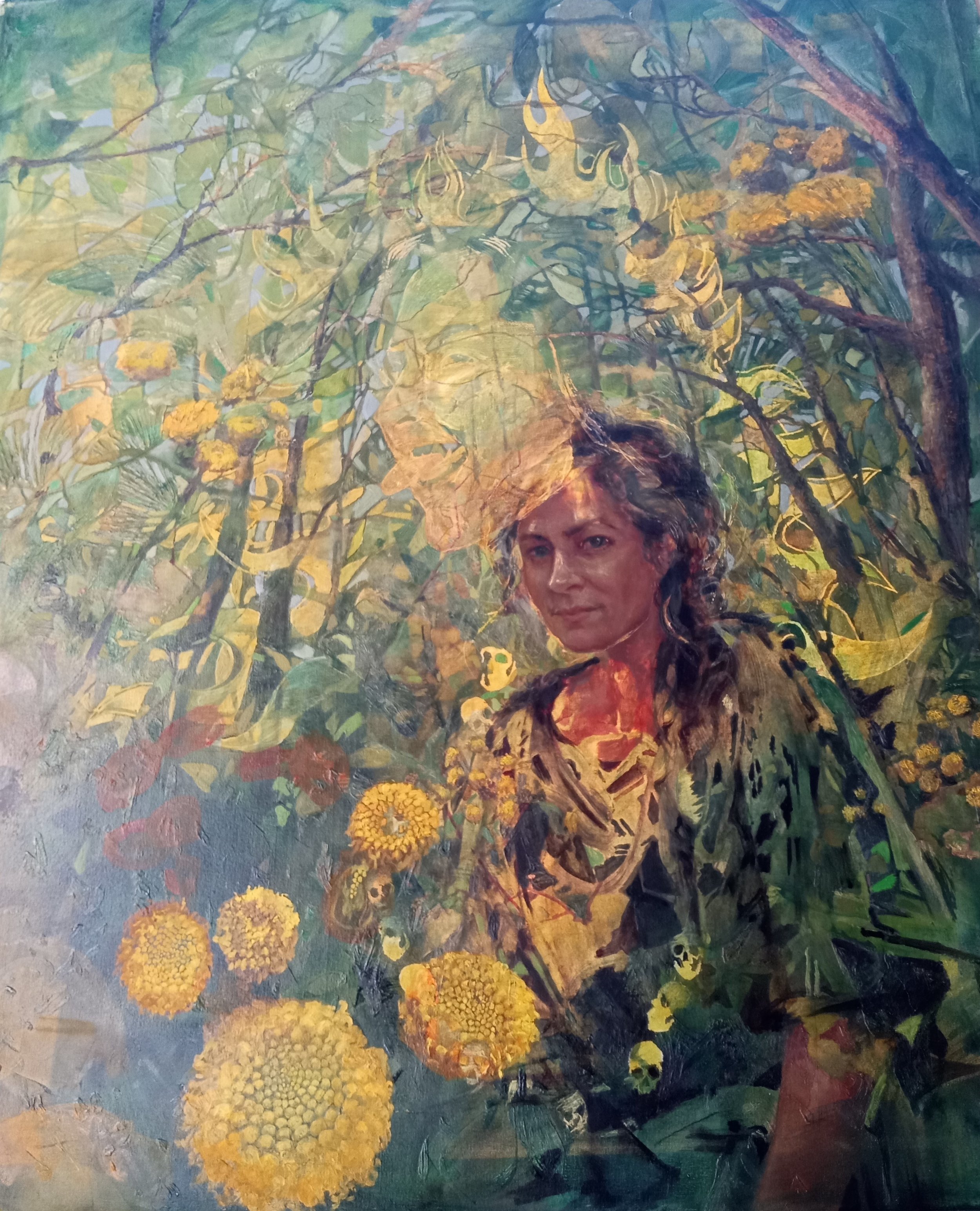
What themes do you pursue? Is there an underlying message in your work?
“I love to explore the concept of free will. I’ll get geeky real quick: According to the National Library of Medicine, our bodies are composed of human and bacterial cells in a ratio estimated at 1:1. This ratio is debated heavily, but being only half human is the most conservative report. Other studies state bacterial cells dominate our bodies at a ratio of 1:10. Regardless of the exact number, I find it both exciting and unnerving to consider myself an ecosystem of being with their own agendas and interests.
This awareness affects my understanding of autonomy, since I can not understand the origin of my own decision making. Is it me or the bacteria that releases hormones to influence my way of thinking? Bacteria have the power to affect sociability, energy levels, and the perception of smell and flavor. So how many of my choices do I make for myself? I think this is an important question to ask beyond the scope of what I choose to eat for breakfast. It undermines many of my opinions on how society should function and how I should function within society. I’m interested in this awareness of shared autonomy as a means to see all other beings with greater empathy. It’s a little pantheistic.”
“The question of autonomy undermines many social and political opinions. Since the origin of decision making remains elusive, responsibility for actions may also be called into question.”
Which artists influence you most?
“I am inspired by the textures and processes Max Ernst explored in his natural histories. I studied Sargent paintings extensively while I practiced alla prima painting. I also pull inspiration from Ian Ingram’s exploration of the strange in his hyper-real portraiture. Most influential and inspiring are my fellow artists and friends: Denise, Lyn, Kara, Taylor, Josh, and Charlie, who constantly introduce me to new ways of thinking and nourish my love for the work.”
What is your creative process like?
“My process follows my whimsy. Some days I structure a painting academically with a gracile and careful measuring, other days I paint my forearms and roll across a canvas on the floor. My process is built on exploration and play. I often work from live models which demands an immediacy and adaptability while working. My paintings are built around abstraction created with layers of acrylic. I use oil paint over these initial abstractions for greater freedom since I can squeeze off the oil and preserve the initial patterns beneath.
In many of my recent works, I create a pattern by marrying elements of cubism with the the jagged organic shapes made by tree branches as seen from below. I create a grid, but with organic lines. To make these lines, I copy patterns from tree branches in small plein air sketches. They’re surprisingly complex and challenging to translate. I use these patterns as the groundwork for my grid to create more unexpected and varied shapes, and then add smoother swooping lines that connect each tree branch tip to a singular point. These lines overlap the first branch patterns creating a jagged and wobbly grid that builds upon the angular grids of former cubists.”
What is an artist’s role in society and how do you see that evolving?
“I think artists create because they have a need to communicate their unique experience. I perceive artists as often being isolated from the dominant culture. As an artist, the only role I assign to myself is to keep creating. Regardless of what mission statement I adopt that week, I am only creating from my own subjective experience which is my only weak constant. I encourage myself to explore new interests and pull inspiration from a variety of sources; be it working as a bartender, growing culinary mushrooms in my closet, reading books, or just looking closely at the trash and sturdy sidewalk grasses on my commute. I see this expression of individual experience as the role of artists throughout history.”
Have you had any noteworthy exhibitions you'd like to share?
“I had my first solo show at the Palette & Chisel Fine Art Academy in April '22. I also painted live during a group show at ARC gallery.”
Website: www.casswatersart.com
Instagram: @cassidy_waters


